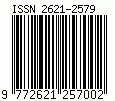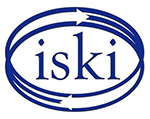Combating the Disinfodemic and Spreading Digital Literacy in Indonesia: Analyzing Japelidi's #japelidivshoakscovid19 Campaign
DOI:
https://doi.org/10.12928/channel.v11i1.179Keywords:
disinfodemic, digital literacy, campaign communication, social media, Instagram, JapelidiAbstract
The Digital Literacy Activist Network (Japelidi) aims to combat the disinfodemic, increase digital literacy competency, and spread accurate information about COVID-19 through social media campaigns, videos, posters, and an anthology book, with the hope of strengthening the community's immunity against the virus. This study aims to analyze and investigate Japelidi’s action campaign to combat the disinfodemic by using the hashtag #japelidivshoakscovid19 on social media. This study uses the netnographic method to analyze content uploaded on social media to increase engagement rates. Data was collected through online observation methods, interviews, and documentation and analyzed based on various factors such as upload date, number of likes, views, comments, and hashtags. Japelidi launched a campaign called Japelidi vs. Hoaks COVID-19, which included three types of content. These contents provided tips for safe interactions during the pandemic, information in 42 regional languages about caring for oneself and one family, and reliable information about COVID-19. The campaign aimed to provide a sense of belonging, accomplishment, and helpful tips to combat COVID-19. Japelidi's campaign met specific core actions, providing a platform to combat misinformation on social media, a sense of belonging and a sense of accomplishment, and offering tips for healthcare providers. They collaborated internally and externally to create digital content in 42 regional languages, and they should continue campaigning to fight the disinfodemic virus during the ongoing COVID-19 pandemic in Indonesia.
References
Asih, Wulan Mulya, Khoiruddin Muchtar, and Yusuf Zaenal Abidin. (2020). Pengelolaan Digital PR Dalam Mengemas Konten Dakwah Di Instagram @masjidtrans. Jurnal Riset Komunikasi (JURKOM). 3 (1). 108–19. https://doi.org/10.24329/jurkom.v3i1.87
Astuti, Y. D. (2021). Digital Literacy Competence of Indonesian Lecturers on Analysis Hoax In Social Media. Library Philosophy and Practice (e-journal). 5234. https:/digitalcommons.unl.edu/libphilprac/5234
Berge, F., & Gaede, J. (2017). Consumer Engagement in Social Media: A Netnographic Study of The Company-Owned Facebook Pages of Nike and Adidas. Swedia: Uppsala Universitet.
December, J. (1997). Introducing the World Wide Web. In The Internet Unleashed 1997, (3rd ed.). Sams: Indianapolis. ISBN-13: 978-1575211848
Hariyanti, N., Salim, M., & Nabilah, R. Z. G. (2021). Level Literasi Digital Peserta Kelas Whatsapp Group Klinik MPASI. Jurnal Komunikasi, 15(2), 109–124. https://doi.org/10.20885/komunikasi.vol15.iss2.art3
Hidayat, D., Kuswarno, E., Zubair, F., and Hafiar, H. (2018). Public Relations Communication Behavior through a Local-Wisdom Approach: The Findings of Public Relations Components via Ethnography as Methodology. Jurnal Komunikasi: Malaysian Journal of Communication, 34 (3). 56–72. https://doi.org/10.17576/JKMJC-2018-3403-04
Hidayati, D. K. (2021). Information Seeking and Usage Behavior of @rlthingy’s Twitter Followers for Satisfying Their Information Needs. CHANNEL: Jurnal Komunikasi, 9(1), 83. https://doi.org/10.12928/channel.v9i1.19467
Holmes, David. (2012). Teori Komunikasi, Teknologi dan Masyarakat. Yogyakarta: Pustaka Pelajar. ISBN: 978-602-229-087-2
Instagram. (nd). About Instagram. Retrieved Juli 2020 from https://about.instagram.com/about-us.
Irwansyah. (2011). Corporate and Marketing Communication. Jakarta: Puskombis Universitas Mercu Buana. ISBN: 978-602-19
Karpati, Andrea. (2011). Digital Literacy In Education. The UNESCO Institute for Information Technologies in Education. Moscow. Catalog Number: 0000214485
Kozinets, R. V. (2002). The Field behind the Screen: Using Netnography for Marketing Research in Online Communities. Journal of Marketing Research. https://doi.org/10.1509/jmkr.39.1.61.18935
Kozinets, R. V. (2010). Netnography. Doing ethnographic research online. Thousand Oaks, California: Sage Publications. ISBN 978-1-4462-8574-9
Kozinets, R.V. (2015). Netnography. The International Encyclopedia of Digital Communication and Society (eds P.H. Ang and R. Mansell). John Wiley & Sons. https://doi.org/10.1002/9781118767771.wbiedcs067
Kurnia, N. (2021). Infodemi COVID-19 di Media Sosial dan Tiga Langkah untuk Menangkalnya. Retrieved Mei 2022, from https://tularnalar.id/infodemi-covid-19-di-media-sosial-dan-tiga-langkah-untuk-menangkalnya/
Kurnia, N., Nurhajati, L., Astuti, S, I. (2020). Kolaborasi Lawan (Hoaks) COVID-19: Kampanye, Riset dan Pengalaman Japelidi di Tengah Pandemi dalam Astuti, S.I., Wiratmo, L.B., Kusumo, Y. W., Strategi Kampanye Japelidi: Bertumbuh dan Berkembang dalam Spirit ‘Crowd’ Yogyakarta: Gadjah mada University Press. ISBN 978-623-95452-5-3
Lankshear, C. & Knobel, M. (2008).Digital Literacies: Concepts, Policies and Practices, New York: Peter Lang Publishing. ISBN: 978 1 4331 0169 4
Lianjani, A. (2017). CMC. Retrieved Mei 2022 from kompasiana.com: https://www.kompasiana.com/lianjania/590b4e8eb67e61f6469174d5/cmc?page=all.
Lincoln, Y. S., & Guba, E. G. (1985). Naturalistic Inquiry. Beverly Hills: SAGE. ISBN 9780803924314
Marta, R. F., Kurniawati, L. S. M. W., Harry, H., Salim, M., Andung. P. A. (2022). Transfer of Knowledge and Scientific Publication Literacy for Young Lecturer by Pojok Dialektika. Abdimas Galuh 4 (1), 310-322 http://dx.doi.org/10.25157/ag.v4i1.7128
Mayangsari, D., & Salim, M. (2021). The Effectiveness of University Instagram Account as Information Media for Students. 3rd Jogjakarta Communication Conference (JCC 2021). https://doi.org/10.2991/assehr.k.211121.040
Martin, A. & Grudziecki, J. (2006) DigEuLit: Concepts and Tools for Digital Literacy Development, Innovation in Teaching and Learning in Information and Computer Sciences, 5:4, 249-267, DOI: 10.11120/ital.2006.05040249
McQuail, Denis. (2008). McQuail’s Mass Communication Theory. (5th edt). London: Sage publication. ISBN 978-1-84920-291-6
Media Indonesia. (2020, Juni 28). Menkominfo Ingatkan Disinfodemic COVID-19 Pada Jurnalisme Online. Retrieved Mei 2022, from https://m.mediaindonesia.com/read/detail/319042-menkominfo-ingatkan-disinfodemic-covid-19-padajurnalisme-online
Mohsin, A. (2020, Mei 23). Mengapa infodemi COVID-19 begitu cepat menyebar lewat media sosial? Retrieved Mei 2022, from https://theconversation.com/mengapa-infodemi-covid-19-begitu-cepat-menyebar-lewat-media-sosial-137715.
Nasrullah, R. (2018). Etnografi Virtual. Bandung: Simbiosa Rekatama Media. ISBN 978-602-7973-46-6
Nugraheny, D. E. (2020, Juli 10). Sebaran 1.591 Kasus Baru COVID-19 di 29 Provinsi: Tertinggi di Jatim Artikel ini telah tayang di Kompas.com , Klik untuk baca: https://nasional.kompas.com/read/2020/07/14/. Retrieved Mei 2022, from https://nasional.kompas.com/read/2020/07/14/16222051/sebaran-1591-kasus-baru-covid-19-di-29-provinsi-tertinggi-di-jatim?page=all
Posetti, J & Bontcheva, K. (2020). DISINFODEMIC: Deciphering COVID-19 disinformation. UNESCO. Retrieved from https://en.unesco.org/covid19/disinfodemic/brief1
Prasanti, D. (2018). Health Information of Literation as Prevention Processes of Hoax Information in the Use of Traditional Medicine in Digital Era (Literasi Informasi Kesehatan sebagai Upaya Pencegahan Informasi Hoax dalam Penggunaan Obat Tradisional di Era Digital). Jurnal Pekommas, 3(1), 45–52. https://doi.org/10.30818/jpkm.2018.2030105
Thurlow, C., Lengel.L, & Tomic, A. (2009). Computer Mediated Communication: Social Interaction and the Internet. London: Sage. ISBN 9780761949541
Rikin, A. S. (2020). Kesehatan Psikologis Memengaruhi Imunitas Tubuh Pasien COVID-19. Retrieved Juli 14, 2020 from https://www.beritasatu.com/kesehatan/630993-kesehatan-psikologis-memengaruhi-imunitas-tubuh-pasien-covid19
Riskinaswara, L. (2020, Mei 16). Literasi Digital Jadi Vaksin Untuk Disinfodemic. Retrieved Juli 15, 2020 from aptika.kominfo.go.id: https://aptika.kominfo.go.id/2020/05/literasi-digital-jadi-vaksin-untuk-disinfodemic/
Salim, M., Utami, F. U., Bramantyo, H. (2021). Digital Media-Based Nutrition Health Communication Model. 3rd Jogjakarta Communication Conference (JCC 2021). 247-251. https://www.atlantis-press.com/proceedings/jcc-21/125964693
Shaw, D., Davis, C. H., Davis, C. H., Shaw, D. (2011). Introduction to Information Science and Technology. New Jersey: ASIS&T monograph series. ISBN-13: 978-1-57387-423-6
UNESCO. (2020). Disinfodemic: Deciphering COVID-19 disinformation”. On COVID-19. Retrieved Mei 2022 form UNESCO: https://en.unesco.org/sites/default/files/disinfodemic_deciphering_covid19_disinformation.pdf.
Yesicha, C. (2019). Komodifikasi Berita Pemerintahan pada Media Online di Riau. CHANNEL: Jurnal Komunikasi, 7(2), 161. https://doi.org/10.12928/channel.v7i2.14037
Venus, A. (2007). Manajemen Kampanye: Panduan Teoretis dan Praktis dalam Mengefektifkan Kampanye Komunikasi. Simbiosa Rekatama Media: Bandung. ISBN 979378203-X
Widiantara, I. K. A. (2021). Model Kampanye Literasi Digital Dalam Menghadapi Gelombang Infodemik. Communicare. 2 (2). https://doi.org/10.55115/communicare.v2i2.1819
Downloads
Published
How to Cite
Issue
Section
License
Copyright (c) 2023 CHANNEL: Jurnal Komunikasi

This work is licensed under a Creative Commons Attribution-ShareAlike 4.0 International License.






